- Home
- Jason Webster
Sacred Sierra Page 2
Sacred Sierra Read online
Page 2
The mas culture was the pillar of the rural economy that had once flourished in these hills. Masos were scattered over the entire countryside, on almost every slope or peak. Dating back hundreds of years, most could only be reached by foot or mule, often a day’s walk from the nearest village along tortuously steep and dangerous paths. The people who had lived in them – the masovers – had been poor, hard-working, independent people who barely scratched out a living by ploughing and tilling the thousands of terraced fields cut into the hillsides. Most of these terraces were overgrown now, the dry-stone walls that held them up slowly crumbling away with every rainstorm, but occasionally you caught sight of some well-tended patches amid the wilderness – an old farmer, perhaps, no longer living in a mas, carefully looking after land passed down to him from his father and grandfather.
I had long been attracted to the area, and the idea of finding a mas of our own. Life here followed an older rhythm: the air was clean and cool, in contrast to the choking humidity and pollution in Valencia; the roads were narrow and winding – some farmers still pulled their carts along with horses or mules; and the people seemed possessed of qualities that appeared ever more ‘real’ in an increasingly virtual world. I wanted a life that hit me in the face every morning and told me I was alive: you couldn’t retreat into the cocoon-world of a cosy flat with an Internet connection when wood needed chopping for the fire, or snow was blocking the front door. After another record-breakingly hot summer in the city, we decided the time had come.
The only problem was finding a mas that someone was willing to sell. After many years in Spain I had learned that seemingly straightforward procedures rarely were so. Rather than going to an estate agent with a few of these places on his books, local wisdom dictated that the best bet was to hit the bars in a particular village and then try to ingratiate yourself with the regulars. Then, and only then, might you get the inside word on some empty farmhouse in the area for sale. The problem was that the locals often spoke only Valencian, which I understood, but still wasn’t entirely at ease with; and they were notorious for being the most closed, difficult bunch of people around.
‘Don’t bother trying to talk to people from Castellón,’ Salud’s father, a farmer himself, had once said. ‘They’re a bunch of greedy peasants.’ He only lived sixty miles down the road.
Still, we decided to give it a go: it seemed the only option available to us. And at least Valencian was Salud’s mother tongue.
‘It’s a strange dialect up there,’ she said. ‘Not sure if I’ll be able to understand everything they say.’
In the end we found our bar, in a whitewashed village high up in the hills at the foot of Penyagolosa, a long way, it felt, from the concrete coast.
‘You’ll wanna talk to Vicente,’ the child serving beer said when eventually we told him what we were looking for. The place gave me a warm glow: anywhere that a twelve-year-old could be paid to pour alcoholic drinks had to be pretty sound.
Vicente, it turned out, was the man in the cowboy hat standing at the end of the bar. He looked about fifty, clean shaven, with a pearl-white smile and throaty laugh.
‘Looking for me?’ he said.
After establishing that he might be able to help us with our search, Salud dived in.
‘We want something south-facing, not too high up or too cold, with a spring or well for water, drains, spectacular views, no neighbours, a good amount of land for working on, and no more than five miles away from the nearest village.’
There was a pause. We’d talked in rough terms about what kind of thing we’d be looking for, but it seemed reasonable to think we’d have to look around a bit before we found something of such an exact description. Vicente put his knuckles on the bar, leaned in towards us with a furrowed brow, and made a whistling sound.
‘You mean the Mas del Barranc,’ he said in a low, conspiratorial voice. ‘You’ve heard of it already?’
Vicente drove us out of the village and up a green valley cut by a fast-flowing river. It was lush and alive, small farms dotted along the banks of the river, tall poplars shading their thick stone walls from the worst of the summer heat. Old mill houses and olive groves with red clay soil rushed by as we wound down the windows, the air mercifully clear and cool enough here for us not to need the air conditioning of his four-wheel drive car. It seemed so different from the scorched landscape I had grown accustomed to; it felt like the hidden secret valleys in the Himalayas I had read about as a boy.
We turned a sharp corner and there was a sudden bump.
‘That,’ said Vicente, ‘was the end of the road.’
The tarmac had finished and we were on a dirt track. Vicente raced on at the same speed, a cloud of fine light-brown powder blowing up behind us from the back wheels.
‘There’s no one else up here,’ Vicente said. ‘Those houses back there are the nearest neighbours.’
We drove on for mile after mile, climbing up hills and then back down into the valley once more. For a moment we started to wonder if the place actually existed at all.
Then we saw it, through some pine trees, high above us: a small group of about four whitewashed farmhouses in the distance, huddled on an outcrop under a steep cliff-face. Vicente laughed: he could see the expressions on our faces.
Agustí was the old masover thinking of selling the place. He didn’t live there any more – it was too much work for him now, so he spent most of his time in a flat down on the coast. He’d come up that day to check up on a few things: we’d been lucky to catch him.
‘Used to make walking sticks in my spare time to earn some money,’ he said once we’d been introduced. Vicente hovered in the background, smiling. Agustí had taken hold of Salud’s arm almost as soon as he’d caught sight of her and leaned on her like a daughter as we slowly shuffled around. ‘We used wood from the llidoner – the nettle tree. But they were all burnt down in the forest fire fifteen years ago.’
The farm had a perfect view down the valley we had just driven up. Yet apart from the almond and olive trees, and the odd pine and oak here and there, it felt denuded somehow, as though there should be more trees, more greenery in this ancient spot. Agustí’s remark seemed to explain why.
‘They used to call this the pinar – the pine-wood area,’ he went on. ‘Pine trees as far as you could see – all the way down to the village there.’ He pointed to the town we had just come from in the distance. ‘They reforest other areas after a fire, but not here. We’re not important enough. Just a few old masovers. No one cares about us.’
He’d tried, he said, to get his children interested in the place, but they just weren’t bothered.
‘It’s a beautiful place, this,’ Vicente said from behind us, keen to be part of the sell.
Agustí gave Salud and me a wink.
‘That gorge,’ he said, pointing down into the gulley that separated the houses from the spring, ‘is what gives this place its name: el Mas del Barranc – Hollow Farm.’
Salud turned to me. ‘I could dance. No neighbours.’
Agustí looked at her steadily for a moment. There seemed to be a tear welling up in Salud’s eye.
‘You two would do well here,’ he said.
*
For over a year after finding the farm we worked with family and friends on doing up one of the houses to create a proper living space. As well as the mountain – called, we were told, La Cantera Motxá, although the name didn’t appear on any map – and forty acres of land, we had two main houses – centuries old – one of which was half ruined and would need considerable work further down the line, and two outhouses, one half a mile down the mountainside near the spring. We were almost at the top of the valley. Apart from the occasional goatherd or elderly farmer checking his almond trees nearby, our only company was the herd of ibex that used to skip down the rock face at dusk, or the wild boar that scoured the earth for food at night. Gradually, almost imperceptibly, as I got used to the place – mentally and emotionally adapting
to what we had taken on board as we spent greater amounts of time up there – my ideas began to shift from it being a simple country retreat into something more. Water was piped up from the spring, solar panels installed, an extension built, a new bathroom and the beginnings of a proper kitchen put in. I enjoyed the experience immensely, relishing the challenge of having to learn new building and carpentry skills – such a change from my normally sedentary life. But in the back of my mind, the work on the house was always going to be a first step towards what I now knew and saw clearly would be the main project on our mountain: the creation of a garden and planting of a forest.
The thought had come all too easily, but I didn’t really have a shining track record with gardens. As a boy, ‘gardening’ had usually been my mother’s code for ‘weeding’, a dull business which had only served to stop me climbing trees or reading – far more exciting activities as far as I was concerned. A garden was something to run around in, not spend hours fiddling about with, and the wilder the better. Years later, in my late twenties, when I found myself trapped in a desk job, my appreciation of gardens had begun to grow. Hounded by sociopathic middle managers and starved of natural light and air in a large ‘open-plan’ office, in idle moments I found myself dreaming of gardens, and they increasingly became means of achieving a temporary imaginary release from the uselessness of what I was supposed to be doing. At that time I used to drive every day past an arboretum, and would look up at it with longing from the road: healthy, lush trees with exotic blossom in the spring, or fiery, dynamic colours and shades in the autumn. It had seemed to beckon me towards a calmer, better world. Caught up in either getting to or getting away from the office, though, I never once stopped to go in and visit. Yet the concept – a dream – of this garden-forest somehow planted itself in my brain, as though seeds of thought had wafted through my open window as I wheezed past. Years later I would be surprised to find myself saying to people with absolute certainty, ‘One day I will plant an arboretum’, despite having little actual knowledge of what such a thing was, or what planting one would entail. So do we carve out our lives, our minds often several steps behind what our imagination has long seen clearly.
But I was stuck at the desk job for the moment, and such a project had seemed – at best – a very long way into the future. Although I might, for the time being, at least try my hand at growing some flowers and vegetables, I thought. The prime years of my life had been mortgaged to a soulless corporation, but that didn’t mean I couldn’t prepare for better times to come.
The only problem was that the flat I was living in had no garden. So, with a couple of friends, I decided to rent an allotment. For about three pounds a year we would have a plot of land on which we could do pretty much what we liked. And the allotment, in our minds, quickly became the key to solving everything that was wrong with our lives. Tired of eating tasteless supermarket vegetables that glowed in the dark? No problem, we’d grow our own – potatoes, lettuce, tomatoes, everything. Need some colour to brighten up a grey morning? How about a bunch of chrysanthemums? A patch of lawn where you could sunbathe, get away from the city noise and simply potter about for the afternoon? Hey presto! It was ours. We even had a garden shed where we could keep deckchairs and a few tools. The potential for fun and adventure away from the overcrowded, overregulated world outside seemed endless. We could dig a well and have our own water supply. We could plant an orchard of strange and exotic fruit trees. We could do our bit to save the planet by cultivating rare species of orchids or endangered Amazonian hallucinogens. From being a small patch of land on the banks of the Thames, before we’d even done any work on it the allotment had became, in our minds, a kind of anarcho-gardening collective that was going to change the world.
There were, however, a few minor problems standing between us and our dream. Firstly, the eldest of us, despite being a huge asset as the only one with any idea about gardening, was half blind and the wrong side of eighty. She might just be able to tell a rose from a horseradish, but catching the number nine bus from her home to our miniature New Jerusalem proved more problematic. Meanwhile, the other friend had just become a father for the first time. Sleep deprivation, plus the fact that he appeared to have ‘black’ fingers where plants were concerned – rather than the more useful ‘green’ variety – meant his contribution beyond the ideas level was limited.
Then there was the fact that, not having actually been ‘gardened’ by anyone for some time, our allotment – one of the ones at the back, the kind no one else was stupid enough to take on – had become the weed capital of the world. Weeds had taken such a foothold there some were competing with nearby trees. Left to their own devices for so many years, others seemed to have mutated and to be experimenting at crossing from the plant into the animal kingdom.
‘Old carpets’ came the surreal advice from one seasoned veteran with an allotment nearby. ‘Place some old carpets on them for a couple of years – starves them of light and kills them stone dead.’ The problem was we didn’t have a couple of years, and the weeds standing between us and our planned earthly paradise looked like the kind that ate old carpets for breakfast. Napalm was ruled out as a solution on the grounds of being non-organic. And none of us could afford the heavy machinery which alone could deal with the problem. Dreams of gardening our problems away were evaporating before our eyes. Two weeks later, the Thames burst its banks and flooded the entire allotment field. We never went back.
I had sworn, though, that if ever there was a next time, I would not make the same mistakes.
Part I
Earth
The Story of St Peter and the Fig Trees
AIXÓ DIU QUE … Once upon a time, many years ago, Jesus was taking a walk through these mountains with St Peter. And as they passed through the fields and crossed the valleys, Jesus asked St Peter which was his favourite fruit.
Now Peter had a think before answering. The fact was that his favourite fruit was the grape. But he thought that if he told Jesus this, he might work out that what he really liked about it was the wine made from it. And once he discovered this, Jesus might make all the grapes on the vines wither and dry out. So he thought of his least favourite fruit: the fig.
‘If I say figs, and he makes them dry out, I won’t really mind,’ thought St Peter. So he turned to Jesus and said:
‘Lord, my favourite fruit is the fig.’
‘I didn’t realise you liked figs so much,’ said Jesus. ‘Well, if that’s the case, for your sake from now on I shall make fig trees produce fruit twice a year: black early figs in June, and green figs in September.’
St Peter kicked himself when he heard this.
‘Just think,’ he thought to himself. ‘If I’d said “grapes” we could have had two harvests of grapes a year, and there would be twice as much wine!’
And he was so angry with himself he almost died of rage right there on the spot.
But that is why, to this day, fig trees produce two crops every year: one at the beginning of summer, and another at the end.
SEPTEMBER
Farmers consider the first season of the year to be autumn, which is made up of three months: September, October and November. September is the Latin name of the first month, which in Syriac is called Ailul, in Persian Mehrmah and in Hebrew Iilul. It is made up of thirty days, and during this time the days are equal to the nights, it being the autumnal equinox, after which the days begin to wane and the nights grow longer.
Almond trees are planted in the mountains, as they are lovers of the cold, and in soft soil they grow big and produce abundant fruit. Other writers say they should be planted only on slopes facing the sun at midday. According to Democritus, the time to harvest almonds is when their outer shell begins to open: they are placed in salt water and then under the sun, after which they are dried. By this method they become white.
Figs ripen at this time of year. They should not be eaten while drinking wine, as the two do not mix well together in the stomach. A st
ick from a fig tree placed in a pan will make the meat there cook more quickly.
Ibn al-Awam, Kitab al-Falaha, The Book of Agriculture, 12th century
DAWN HERE HAS a rare and unusual power. In the city it passes unnoticed, drowned into insignificance by the street lights, the noise: just another hour – one of many – that makes up the day. But on the mountain, where we can hear silence, I feel it before I am even awake: a restlessness, nervousness, wrenching me away from sleep. Eyes closed, I can sense its coming, like a pulse in the landscape: a pale-blue cloak of the first promise of daylight, a shock of cold intake of breath. A current seems to spark under the surface of the earth, surging through every rock, up every tree and blade of dry grass. A first bird gives a waking cry – perhaps a great tit or a wren – then a second, and a third, and soon the valley is awash with song. The sun is coming, light is coming; the stars fade and disappear with the veil of night.
I drift on until daylight reaches out to shake me from slumber until, with a jolt, my eyes open, staring incredulously at the rising, stretching world outside my window. Sleep, so easily my early-morning master, is cast aside like a dry, unwanted skin. I find myself up and moving through the house as though possessed of a different energy, one that comes from outside my normal self. I am surprised by it at first: the experience is a change from my ordinary habits. But as the days and weeks go by I grow more accustomed to this new rhythm. There is something cold, something harsh about it, but I am content to let it follow its course, and watch the change this landscape is bringing over me.
The day progresses, and as we work on the house and the land I keep one eye fixed on the slow, patterned transformation of the world around us. As the sun traces across the sky and the light passes from colour to colour, so the valley stretched out before us and the mountainsides rising up like hands change and alter: vast waves in a slow-moving sea. A feature like a copse or a broken rock hanging tentatively from a cliff-face may be invisible in the morning, only to come into view with the gentler light of late afternoon. As the days pass I see more and more masos like our own, abandoned on the hillsides. Before, these were simply not there, and, even now, when I know where they are and could point to them with ease, they only really exist at their appointed time of day, when the landscape offers them up for a few hours before shrouding them from view again.

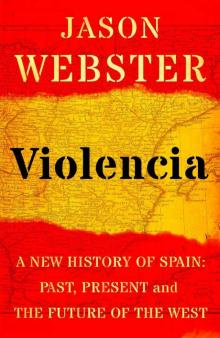 Violencia
Violencia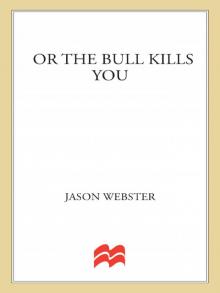 Or the Bull Kills You
Or the Bull Kills You The Killing of El Niño Jesús
The Killing of El Niño Jesús The Spy with 29 Names
The Spy with 29 Names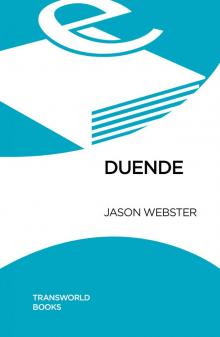 Duende
Duende Guerra
Guerra Sacred Sierra
Sacred Sierra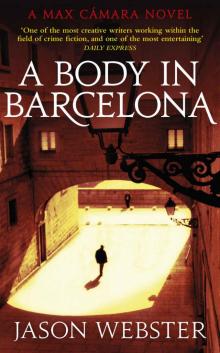 A Body in Barcelona: Max Cámara 5
A Body in Barcelona: Max Cámara 5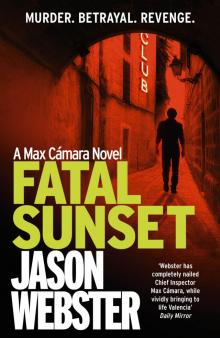 Fatal Sunset
Fatal Sunset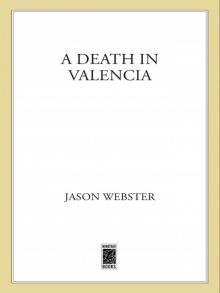 A Death in Valencia
A Death in Valencia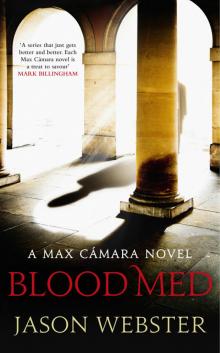 Blood Med
Blood Med Andalus
Andalus